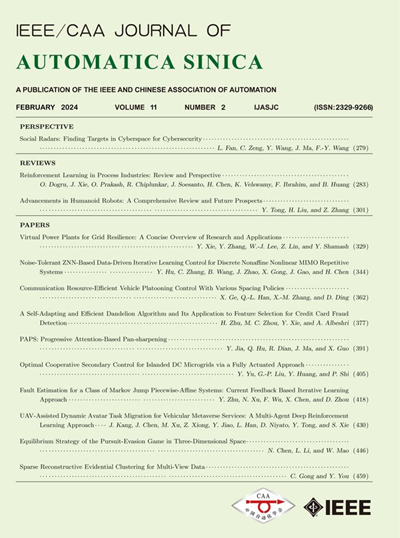基于代理和逆代理模型的昂贵多目标优化进化算法
IF 19.2
1区 计算机科学
Q1 AUTOMATION & CONTROL SYSTEMS
引用次数: 0
摘要
在处理昂贵的多目标优化问题时,现有的代理辅助进化算法(saea)大多通过设计代理模型在决策空间中生成解,并筛选候选解。生成的解决方案表现出过多的随机性,这往往会降低生成高质量解决方案的可能性,并导致向最优方案的长期进化。为了极大地改进saea,本工作提出了一种基于代理模型和逆代理模型的进化算法:1)使用代理模型代替昂贵的(真)函数评估;2)提出并使用逆代理模型生成新的解决方案。通过使用相同的训练数据,但其输入和输出相反,后者很容易训练。然后在目标空间中生成新的向量,将其映射到决策空间中,得到相应的解。通过一个特定的例子,这项工作显示了它相对于现有saea的优势。将该方法与目前最先进的昂贵优化问题算法进行比较,结果表明该方法在求解性能和效率上都具有很强的竞争力。本文章由计算机程序翻译,如有差异,请以英文原文为准。
Evolutionary Algorithm Based on Surrogate and Inverse Surrogate Models for Expensive Multiobjective Optimization
When dealing with expensive multiobjective optimization problems, majority of existing surrogate-assisted evolutionary algorithms (SAEAs) generate solutions in decision space and screen candidate solutions mostly by using designed surrogate models. The generated solutions exhibit excessive randomness, which tends to reduce the likelihood of generating good-quality solutions and cause a long evolution to the optima. To improve SAEAs greatly, this work proposes an evolutionary algorithm based on surrogate and inverse surrogate models by 1) Employing a surrogate model in lieu of expensive (true) function evaluations; and 2) Proposing and using an inverse surrogate model to generate new solutions. By using the same training data but with its inputs and outputs being reversed, the latter is simple to train. It is then used to generate new vectors in objective space, which are mapped into decision space to obtain their corresponding solutions. Using a particular example, this work shows its advantages over existing SAEAs. The results of comparing it with state-of-the-art algorithms on expensive optimization problems show that it is highly competitive in both solution performance and efficiency.
求助全文
通过发布文献求助,成功后即可免费获取论文全文。
去求助
来源期刊

Ieee-Caa Journal of Automatica Sinica
Engineering-Control and Systems Engineering
CiteScore
23.50
自引率
11.00%
发文量
880
期刊介绍:
The IEEE/CAA Journal of Automatica Sinica is a reputable journal that publishes high-quality papers in English on original theoretical/experimental research and development in the field of automation. The journal covers a wide range of topics including automatic control, artificial intelligence and intelligent control, systems theory and engineering, pattern recognition and intelligent systems, automation engineering and applications, information processing and information systems, network-based automation, robotics, sensing and measurement, and navigation, guidance, and control.
Additionally, the journal is abstracted/indexed in several prominent databases including SCIE (Science Citation Index Expanded), EI (Engineering Index), Inspec, Scopus, SCImago, DBLP, CNKI (China National Knowledge Infrastructure), CSCD (Chinese Science Citation Database), and IEEE Xplore.
 求助内容:
求助内容: 应助结果提醒方式:
应助结果提醒方式:


